I am an independent scholar and author with no institutional funding. Please, consider supporting me on Patreon so I can continue to do the work. Thank you!
Tove Jansson: the Moomin books
Layla’s reviews of books by:
Tove Jansson, born into a Swedish minority in Finland, a painter, illustrator, and writer is most famous for her picture books on the Moomintrolls. I find all of her work fascinating, as she approaches nature (human and other) with deep respect, understanding, humour, and most astonishing little touches. Her sense of freedom and harmony prompted me to consider the world of the moomins depicted in her 9 novels as an important paradigm for social relations and knowledge in my doctoral dissertation.Even though the books boast intricate plots and adventures, the most important aspect of Jansson’s literature is the depiction of intricate details of individual traits and relationships that make these books truly precious for any age. All the books come with her beautiful illustrations.
The first book by Tove Jansson, The Little Trolls and the Great Flood (Internet translation by David McDuff, 1996 that has recently being published by Schilds) is often considered as her weakest work and many readers have, unfortunately, dismissed her abruptly after the first read without giving the series a chance. That is sad, because I find this story vital to the setting of the series and to understanding the driving force behind the persistence of Moominmamma to escape war and civilisation that came to destroy the natural habitat of the Moomintrolls behind brick-wood stoves, in old wooden floor creaks and chimneys.
Here, Moominmamma sets off to find Moominpappa in order to create a home where all who seek peace and quiet are welcome. The book used to be available on the web with all of Jansson’s beautiful illustrations, but now I find only the text translated by David McDuff.
For an in-depth analysis of Moominbooks (and other children’s books) see part II of my doctoral dissertation (published in The Paulinian Compass, June 2010) titled:
Comet in Moominland tells of the adventures of the Moomintroll, Snif and Snufkin as they set off by raft and then on foot to the mountains to see at the Observatory about the impeding arrival of a cosmic comet. There are several unusual aspects to the way in which Jansson constructs the narrative. First, the usual pattern in children’s literature of adventure is to “get rid” of parents and adults by having them get ill or even die or vanish on some business leaving the children during some holiday with some old and absent relative. In this book, the parents are present and fully support the children’s explorations of the beautiful, yet dangerous and mysterious world. Second, Jansson writes about “society” with humour and respect even in what may appear to be the “absence” of society.
Finn Family Moomintroll or the Magician’s Hat is a book about summer games, discoveries of the abundance of the earth, surprises and pure magic of a happy people content with what life gives them.
The Exploits of Moominpappa or Moominpappa’s Memoirs
is a humorous depiction of the genre of memoirs itself and concomitantly of social relations: questions of adoption and orphanages, of family relations, friendship, freedom, and of life are intertwined between Moominpappa’s readings/writings and his family’s reactions, discussions and questions.
Midsummer Madness tells of the return of the flood.
The moomins float away in a mysterious construction and end the hot, flooded, summer season with the staging on water of Moominpappa’s hexametric melodrama.
Moominland in Midwinter usually goes by unnoticed by the Moomin family as they sleep through the winter.
This time, though, Moomintroll awakens and discovers a new world of mystery and snow. A beautiful adventure of discovering the beauty and warmth of the endless dark winter night.
Tales from Moominvalley is a collection of touching and deeply reflective short stories about different characters, such as the invisible child, the Mymble family, Snufkin and his tune or the Fillyjonk who believed in disasters.
Moominpappa at Sea, Jansson succeeds to present a complex world beyond the safety of the Moominvalley. Here, the Moomin family faces the mystery of the land, the sea, the weather and the universe itself. The book brings forth masterfully the depth of the relationship between the self and the world.
Moominvalley in November is a book about absence.
The Moomin family is still at Sea, where we left them in the previous book. Their house is the hearth that attracts creatures who long for the warmth of family closeness and peace. Even the grumpy, pedantic Hemul longs for their chaos! Snufkin returns for a left-behind tune. The Fillyjonk, after surviving a session of cleaning windows (cleaning sessions are known to be fatal) comes to the Moomin house. Other characters in need of comfort and resolution are drawn to the family who is not there. And they find both. A beautiful read.
Picture books:The Book About Moomin, Mymble and Little My
Who will Comfort Tofle
The Dangerous Journey
The Fillyjonk Who Believed in Disasters
Jansson also illustrated Lewis Carroll’s Alice’s Adventures in Wonderland.back to my Reviews page








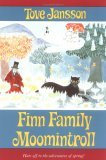
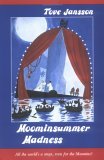
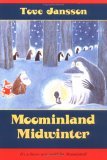
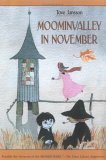
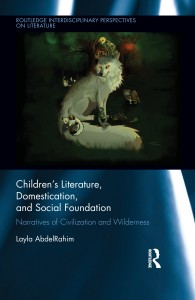
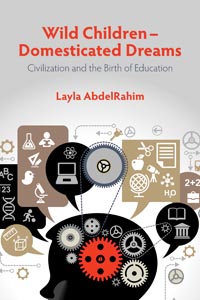
Hola me encantan los moomin soy de chile, sudamerica, yo los veia y los adoraba, ojala alguien pueda responderme este comentario, se que todo esta en ingles, aleman, y en idiomas que yo no se, ojala alguioen me pudiera mandar un links para encontrar los libros y la serie animada en español, ellos formaron parte de mi infancia.
gracias.
mysticisme@gmail.com